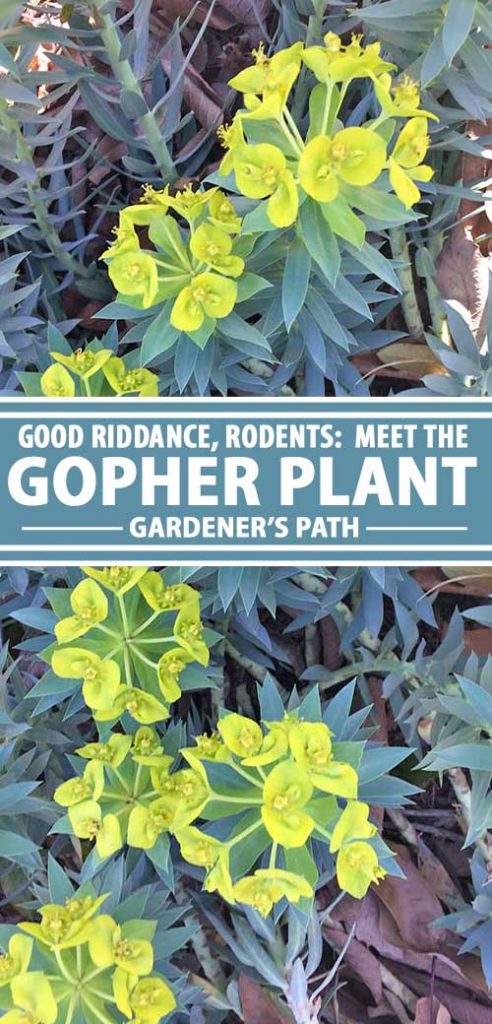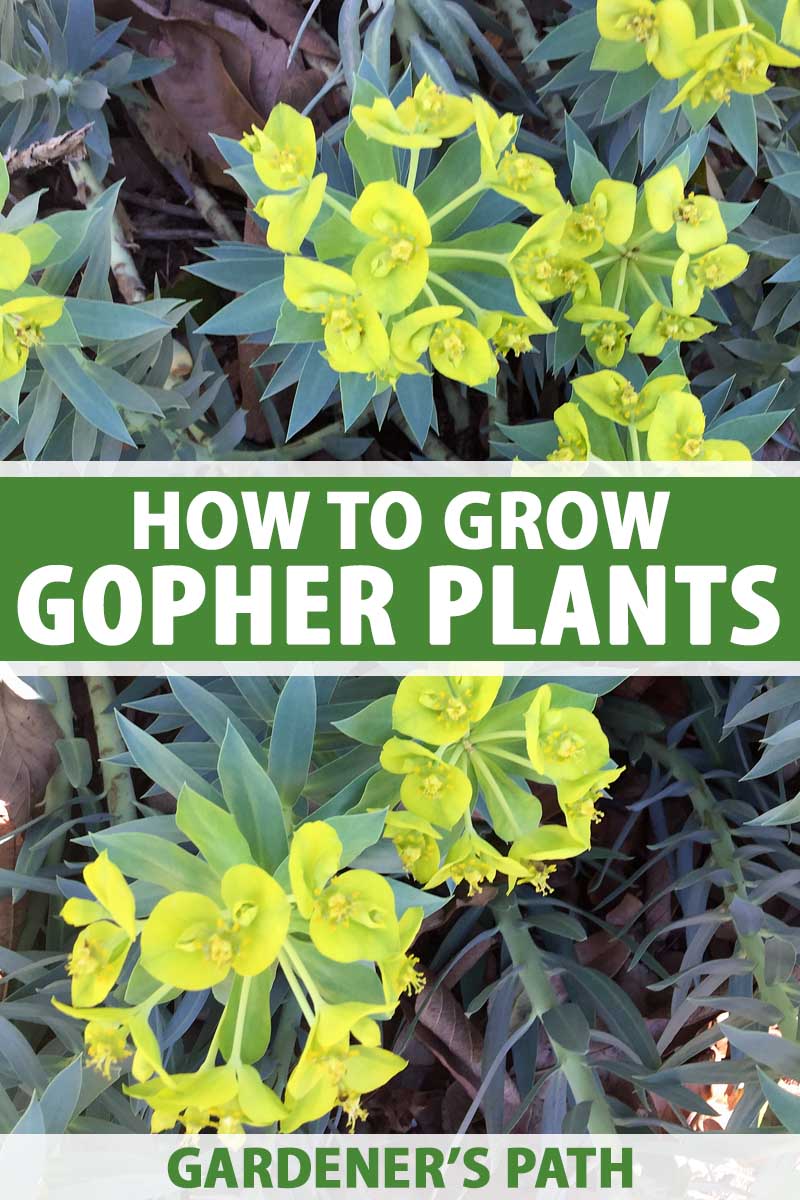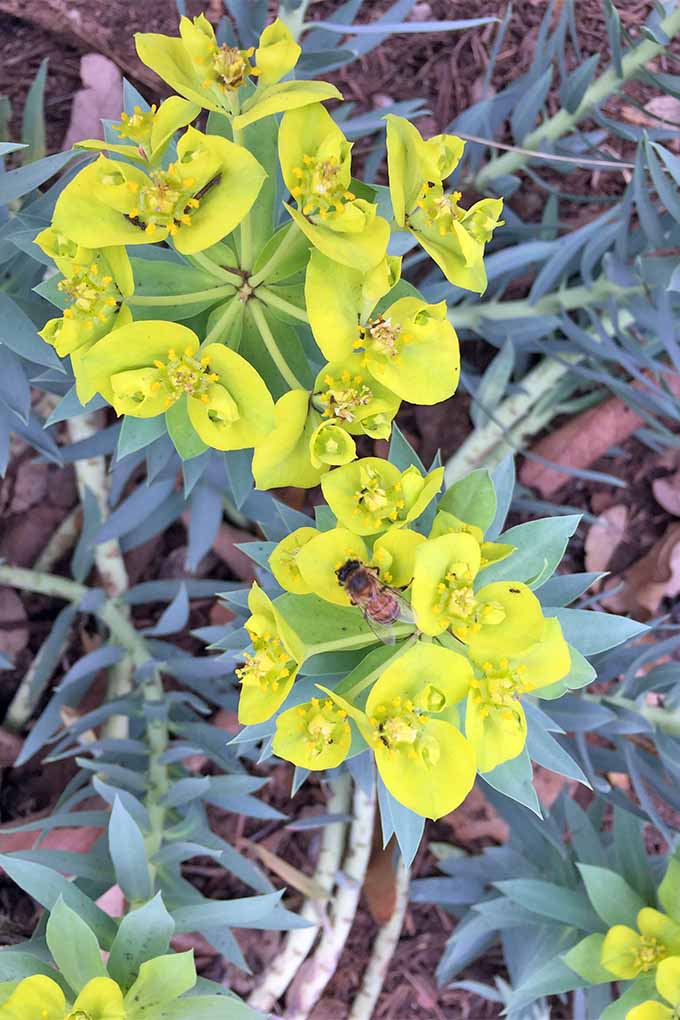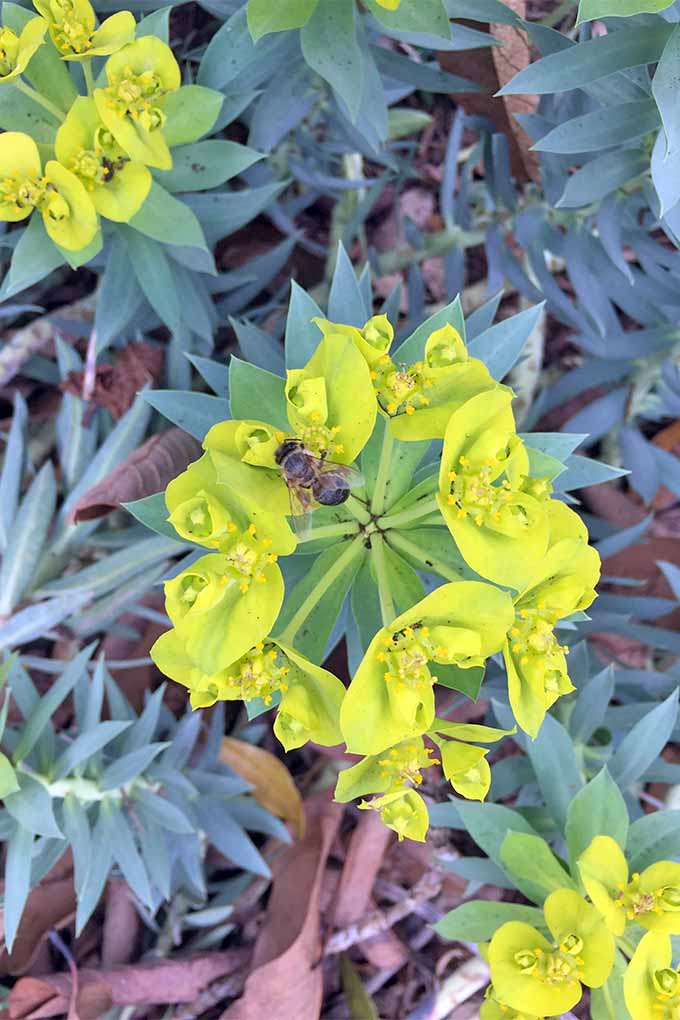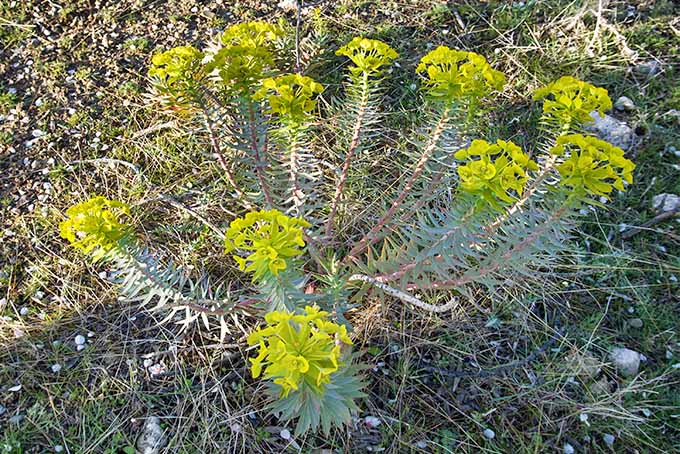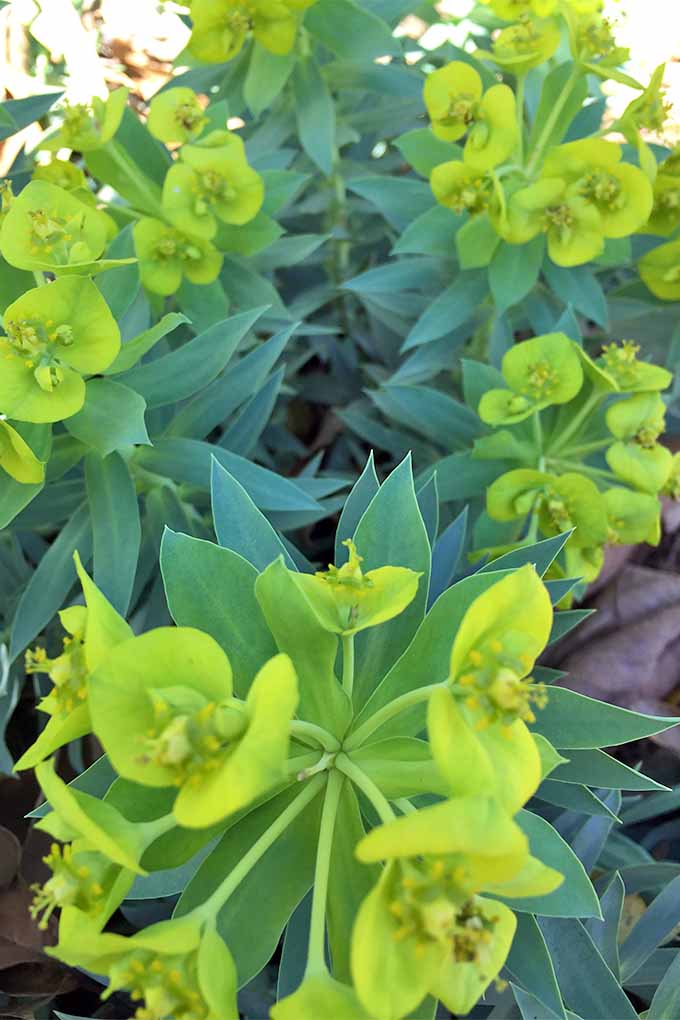Gopher plant (Euphorbia rigida) is native to the Mediterranean and the Middle East, where it is considered a weed. Fortunately, E. rigida has found a more welcoming home as a specimen ornamental in zones 7-10 here in North America, where many gardeners appreciate its interesting and easy-care habit. We link to vendors to help you find relevant products. If you buy from one of our links, we may earn a commission. Just for good measure, it has a secondary scientific name, too: Euphorbia biglandulosa. As alluded to above, this shape-shifter can sprawl out, almost groundcover-like, or it can be much more shrubby, with silvery-gray, lance-shaped leaves that spiral around thick stems reaching up to two feet tall. Sometimes a single specimen can exhibit both growing habits. It is cold tolerant to low temperatures between 10 and 20°F. In Austin, we sometimes get a couple of winter nights in the low 20s, and I’ve never lost one. Some gardeners in colder climates, however, treat E. rigida as a summer annual.
Hidden Dangers, and Benefits
Like its other Euphorbia cousins, E. rigida is toxic if eaten, so keep curious pets and toddlers away from this one. If the plant is cut or broken, it leaks a milky sap that can cause skin irritation. Bees flock to the springtime flowers of this evergreen beauty, which is in the family Euphorbiaceae. Scientists have also begun research using various types of Euphorbia as a biofuel. I, for one, would love to be able to thank fields and fields of this pretty plant and its relatives for supplying electricity to my home.
Rock ‘n Roll
These hardscrabble toughies will tolerate many well-drained soil types: clay, sand, loam, or chalk. They look particularly nice in rock gardens, and in beds with pebble mulch. E. Rigida, 2 Cuttings, 3-5 Inches You’ll receive two 3- to 5-inch cuttings. To root the cuttings, dust the ends with 0.1% naphthalene acetic acid (a type of rooting hormone) and insert into a succulent planting medium — a mixture of sand, perlite, and peat moss. Apollo Horticulture 9×20″ Seedling Heating Mat for Propagation and Cloning This 9-by-20-inch mat will help speed up the rooting process. Do not place your cuttings in direct sun. Water just enough to keep the soil from getting completely dry. Your cuttings should be rooted in about three weeks. Allow them to remain in their containers throughout the winter, and then transplant outdoors when all danger of frost has passed.
E. rigida seeds are not shelf stable, and so it is unlikely that you will be able to purchase them commercially. When mature, it will self-seed in your garden, and you can divide existing plants, too.
I usually see them growing in full sun, but some gardeners have also had luck growing them in partial shade.
Not too Much to Drink
Gopher plant is extremely drought tolerant. I don’t give mine any supplemental water; we only get rain once or twice in the summer, and it does just fine. If you object to the sprawly, slightly odd-looking form that it can take after blooming, trim off the trailing stems. You’ll get a more compact, upright plant. Like all spurges, it’s best to wear gloves when trimming this plant, to avoid the irritating sap that oozes out when it’s cut. I’ve never fertilized mine, but if yours is looking a little peaked, dilute a 10-10-10 fertilizer to one-quarter strength and apply once a week during the growing season.
Safer Brand Insect Killing Soap, 32 Oz. This 32-ounce spray bottle is ready to use.
E. rigida repels deer and rodents, including — you guessed it — gophers, so no need to fret over those pests.
Gorgeous Natural Rodent Repellent
Texturally and chromatically compelling, easy care and repels rodents — what more could you ask for? E. rigida is an attractive plant that does particularly well in xeriscaped landscapes or other gardens where an intriguing specimen plant would be welcome. Had you ever heard of E. rigida before? Does it sound like something you might like to add to your garden? Tell us about it in the comments section below, and if you’re looking for another xeriscape-ready plant, consider small globe thistle. Photos by Gretchen Heber © Ask the Experts, LLC. ALL RIGHTS RESERVED. See our TOS for more details. Product photos via skygardenLG, Apollo Horticulture, and Safer Brand. Uncredited photos: Shutterstock. With additional writing and editing by Allison Sidhu.
